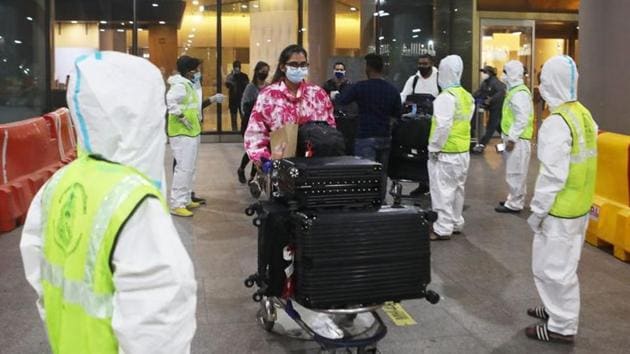Mutant strains emphasise the need for strict controls
It is important to keep the viral load in check so that the natural benefits India’s population enjoys of broad-based immunity can be best made use of
The Sars-CoV2 that causes Covid-19 in humans is a positive single-strand RNA virus that jumped species to humans in 2019. Mutations within RNA viruses, including those in coronaviruses, occur frequently because of the need for adaptation to the new host and for survivability. While a large majority of such mutations are generally neutral, others may either be advantageous or deleterious to the virus. Mutations that are highly deleterious get deleted rapidly from the population, while those that are only slightly deleterious may be retained, albeit transiently.

The 21st century has already seen three coronaviruses, of which the Sars-CoV2 has shown higher transmissibility and infectivity due to an important mutation at position 614 of its genome whereby an amino acid (AA) aspartic acid changes to glycine at this position of the Spike protein of the virus (D614G). Amino acids are the structural units that combine to form proteins. The latter are recognised as antigens by the host, evoking specific immune responses.
Recently, another mutation, namely N501Y, has been recorded in the United Kingdom (UK), leading to a change of AA asparagine to tyrosine at position 501 and linking it to further increased transmissibility.
This has caused immense concern, especially at a time when the emergence of vaccines had brought cheer and hope for the humanity. The new UK strain designated as VUI2020/12/01 (variant under investigation, year 2020, month 12, variant type 01) has recorded over 20 mutations, mostly silent, causing no change in the protein.
Biologically, mutations represent steps in virus evolution under selection pressure of the host immunity. Experts in evolutionary biology view these as a system evolved by the virus to escape immunity or to enhance transmissibility. As the virus replicates, mutations happen in its genes continually through a process called “antigenic drift”, causing minor changes in the surface protein. However, these small changes could accumulate over time, and result in newer viruses that could become antigenically different such that the existing antibodies mounted by the host immune system to the original virus fail to recognise and neutralise them.
As of date, there is little information on the pathogenicity (ability to cause disease) and immunogenicity (ability to provoke immune response) of the new UK variant. The New and Emerging Respiratory Virus Threats Advisory Group (NERVTAG) in UK has reviewed the new strain and found four interesting features.
One, its growth rate is ~71% higher than other variants, and two, the R-value shows an absolute increase between 0.39 and 0.93. The R value represents reproduction number and indicates an average number of secondary infections caused by an infected case. Value >1 suggests transmission to a number of individuals and higher spread of the disease. Three, the cycle threshold or CT value in the RT-PCR test suggests a decrease of about 2 and, four, the viral load suggests 0.5 increase in median log10 in new 501Y strain as compared to the original 501N. However, despite higher transmissibility, the new strain has not shown severe complications. It is also unlikely that it won’t be responsive to the already developed coronavirus vaccines, although relevant data needs to be generated on that front.
The important question is why and how do these mutations occur and whether there is a role for host immunity in driving them? More importantly, could antibody treatment or other therapies have an influence in the process? The preprint of a recently submitted paper to medRxiv portal by the group in Cambridge, UK, led by Dr Ravinder Gupta, has focused exactly on these issues. The study is based on a single case report of an immune-compromised individual with chronic SARS-CoV-2 infection, lasting over 100 days and treated with three units of convalescent plasma, two on day 65 and one on day 95 in an effort to neutralise the virus and treat the chronic infection.
The virus was detectable in the patient in all nasal swab samples collected at least 23 times over a period of 101 days, despite the plasma therapy. The authors investigated the SARS-CoV-2 evolution and found important changes in its genome caused by two new mutations in the spike protein, one a deletion of AA Histidine and Valine at positions 69 and 70 and, two, one AA replacement at position 796 (D796H). The authors state that while the two mutations did not increase infectivity of the virus, these might have been responsible for decreased sensitivity of the patient to convalescent therapy.
Being a single case report, the results of the study cannot be generalised. However, it raises the important issue of generation of “escape mutants” of the virus in patients with persistent infection. The virus escaped attack by neutralising antibodies present in the convalescent plasma. The important lesson is to perform careful monitoring of such newer strains both for their transmissibility and potential to evade vaccine-mediated immunity. The emergence of new mutants of the coronavirus further emphasises the need for observing infection-control practices even more strictly and until such time that herd immunity develops.
The views expressed are personal



